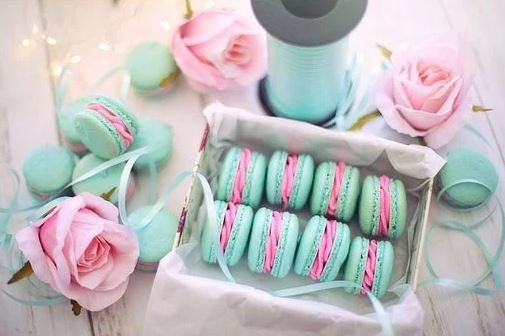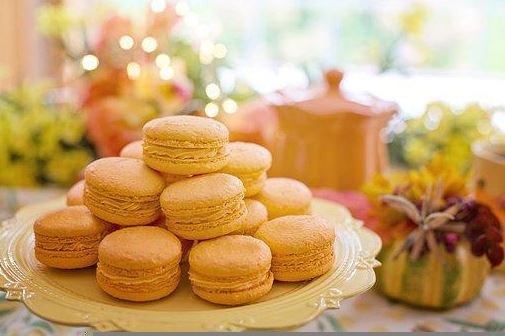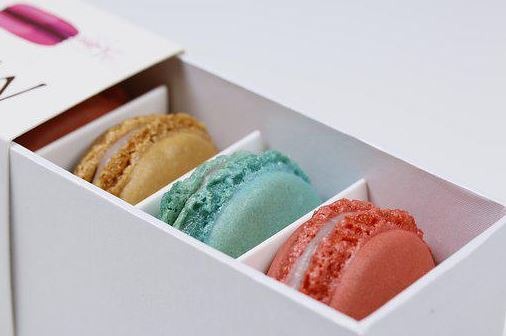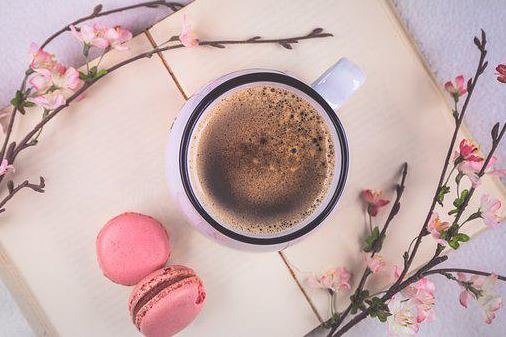Macarons are a beloved French treat that are colorful, pillowy, and delicate. These meringue-based confections are almost an art form now. Macarons are ubiquitous in cafes and bakery stores across France, and these miniature sandwich pastries are also gaining appeal in other areas of the world as well. These delectable treats are known for their light and sweet top and bottom shells, as well as a buttercream, jam, or ganache filling best paired with your favorite French tea. The best thing about macarons is how small they are and how easily they melt in your mouth. They are also thought to be inexpensive family take-home gifts.
What Exactly is a Macaron?
A macaron is a French cookie made of finely ground blanched almonds suspended in meringue. Each macaron is colored with colorful food coloring to indicate the flavor: lime green, raspberry pink, etc. After baking, a filling such as jam or fruit curd, chocolate ganache, or buttercream is sandwiched between two cookies. Macarons have smooth tops and a ruffled area around the bottom when they’ve been baked to perfection.
Their texture is light and cakey-chewy, with a smidgeon of crunch on top from an imperceptibly thin crust. It’s little, round, and exquisite, and it’s captured the hearts of the world’s most discerning palates: Macaron, the current king of French sweets.
Because it is a specialty in numerous cities and areas around France, the recipe and presentation may vary. Amiens, Boulay, Chartres, Cormery, Joyeuse, Le Dorat, Massiac, Montmorillon, Nancy, Rau, Saint-Emilion, Sainte-Croix Lannion, or Sault macarons are some examples of cities where the macaron is unquestionably a gastronomic treasure.
The basis dough for all of the cities mentioned above is made of meringue, almond flour, icing sugar, white sugar, and egg white. The amount of icing sugar and almond flour in most recipes is the same. Other factors vary by recipe; some macaron recipes incorporate fillings, while others do not. Another tradition that hasn’t changed is that all macarons are roasted in addition to being round; however, the temperature and duration in the oven vary from recipe to recipe.
The Origin of Macarons
The myth dates back over 1000 years to the 600-700s Arab dynasty. The Arabs brought their foods with them when the empire moved up through Northern Africa into what is now Sicily.
One of the meals they brought was a sweet “cookie” prepared with honey and crushed up nut flour – most likely pistachio, but potentially almond or other nuts.
This cuisine was termed “maccheroni” by the Sicilians because it was prepared from ground nuts, and maccheroni applied to any savory or sweet snack made from ground up nuts, wheat, or anything.
The sweet maccheroni evolved over time to include egg whites for leavening and the bitter almonds that are so well known throughout the Italian peninsula.
The macarons of today are the result of a long evolution from earlier macarons. Macarons are thought to have originated in Italy in the 8th century, according to the popular mythology. The macaron was first introduced to France in 1533, when Queen Catherine de’ Medici of Italy married King Henry II of France, and her pastry cooks took the recipe with them. These cookies were called “priest’s bellybuttons” back then because they were created with almonds, egg white, and sugar.
When King Louis XIV opted to stay at Versailles in 1682, macarons were offered as a welcome gesture to the guests. Macarons had previously been thought to be a royal-only treat. The ritual continued until the fall of the empire in 1789.
Macarons for everybody
Marguerite and Marie-Elisabeth took refuge in Nancy, in eastern France, during the French Revolution. When these sisters started selling macarons to commoners in 1792, they became famous. The sisters were skilled pastry chefs, so to supplement their income, they began baking “priest’s bellybuttons,” which quickly became known as “Macarons de Nancy.”
Macarons were originally made up of two biscuits that were filled with jellies, spices, or liqueurs in the 1830s. Ladurée of Paris, the renowned Parisian tea salon, is credited with the invention of contemporary macarons in the early twentieth century. Currently, this renowned luxury pastry boutique offers macha tea, salted caramel, chocolate, pistachio, salted caramel, orange blossom, and raspberry macarons. Since then, the recipe has remained unchanged.
Where in Paris Can You Get the Tastiest Macarons?
1. Ladurée
Ladurée is the most recognized macaron maker in the world as the originator of the contemporary macaron, which is why they are top on our list. It is worthwhile to pay a visit to Ladurée to see a true French pastry institution.
2. Pierre Hermé
In Paris, Pierre Hermé creates our favorite macaron. He is known for his strong combinations of ingredients and is always at the forefront of the flavors.
3. Gérard Mulot
The ultimate macaron in Paris: a light, crispy biscuit with a meticulously prepared filling.
4. Aoki Sahdaharu
Chef Sadaharu Aoki’s Japanese heritage are evident in his macarons. It combines traditional French flavors with the subtle aromas and textures of Japanese ingredients.
5. Carette
In this traditional French pastry, macarons with fruity and strong fillings take center stage.
Macaron Crosses the Ocean
The macaron, considered one of the emblems of French confectionery, crosses the Atlantic to conquer America and achieve a worldwide dimension, continuing its centuries-long journey. Chef de pâtisserie François Payard of New York’s “Daniel” restaurant gives this little biscuit to diners in 1993. It’s a success, of course!
Some Delicious Flavored Macarons
Macarons de Citrus
Because the almond flour is ready to use right out of the container, these light macarons are a terrific place to start when preparing your first batch.
Hazelnut-Chocolate Macarons
For this dish, look for peeled hazelnuts that have been toasted to bring out their entire taste.
Almond Macarons with Jam
The almond flour for this easy French recipe is made from blanched almonds. It may appear like making your own macarons is more work than buying them, but the extra effort pays off in the form of the most fragrant, nutty macarons you’ve ever tasted.






